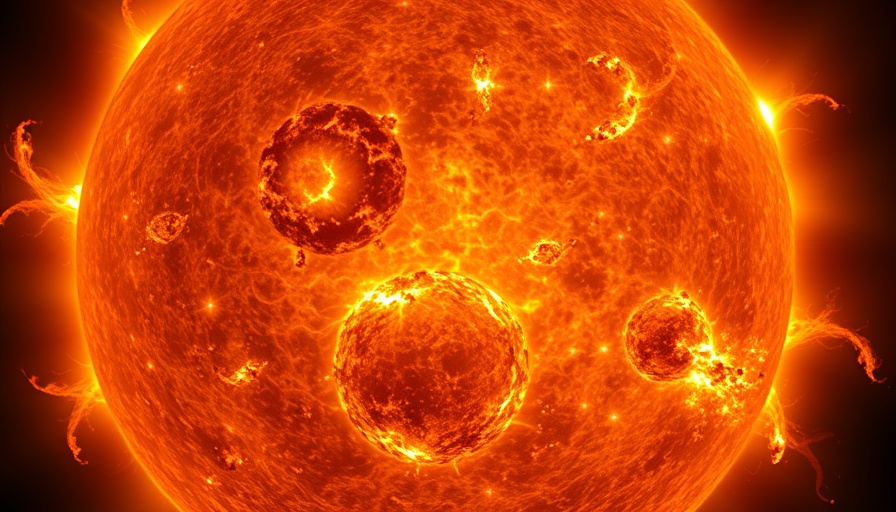
Understanding the Unexpected Force of Solar Storms
The recent solar storm that hit Earth on April 23, 2023, serves as a stark reminder of our sun's unpredictable power. This intense event caught scientists off guard, primarily because it followed a relatively minor solar flare. Yet, it was precisely this discrepancy that led to groundbreaking insights into solar dynamics, largely thanks to NASA's innovative heliophysics missions.
Insights from NASA's Missions
Utilizing data from five heliophysics spacecraft, researchers have begun to unravel the complexities surrounding coronal mass ejections (CMEs). These CMEs are massive bursts of solar wind and magnetic fields rising above the solar corona, which can significantly disturb Earth's magnetic environment. The April storm's unexpected intensity was attributed to the CME's unique orientation as it approached Earth, facilitated by high-speed solar winds from a coronal hole.
“The fast solar wind coming from this coronal hole acted like an air current, nudging the CME away from its original trajectory towards Earth's orbital plane, enhancing its strength as it interacted with our planet’s magnetic field,” explains lead researcher Evangelos Paouris from the Johns Hopkins Applied Physics Laboratory.
Predictive Science and Future Preparedness
The implications of this research are profound. Understanding how CMEs react with solar winds can significantly improve our predictive models for space weather. As our reliance on technology grows, so does our vulnerability to geomagnetic disturbances. Systems ranging from GPS navigation to power grids can be disrupted by severe solar activity, which means that enhanced forecasting is more crucial than ever.
NASA’s GOLD (Global-scale Observations of Limb and Disk) spacecraft stands at the forefront of these predictions. It monitors atmospheric conditions in ways previously unattainable. Its observations during the April 2023 storm are paving the way for a new understanding of thermosphere dynamics, thus offering vital data that could aid in safeguarding technological infrastructure against solar storms.
The Broader Implications for Society
As we advance into an era of increased technological dependence, the ability to delineate the nuances of solar storms will become increasingly relevant. Future weather predictions are not just about keeping astronomers informed; they are also about protecting our daily lives, from the satellites that help us navigate and communicate to the broader impacts on global security. For instance, disruptions caused by solar storms could lead to blackout conditions, affecting everything from financial systems to emergency services.
Conclusion: Why This Information Matters
As we continue to deepen our understanding of solar activity, one thing is clear: ignorance is not bliss when it comes to solar storms. The research highlighted by NASA underscores the critical need for preparedness against nature's unpredictable phenomena. Knowing more about solar storms can empower both scientists and the general public to anticipate potential disruptions. This readiness can not only mitigate risks but also foster resilient infrastructure capable of withstanding the solar whims of our closest star.
As we forge ahead in a tech-driven world, staying informed about space weather becomes essential. Follow NASA and other scientific bodies to remain updated on the latest developments in solar research and its implications for our lives.
 Add Row
Add Row  Add
Add 




Write A Comment